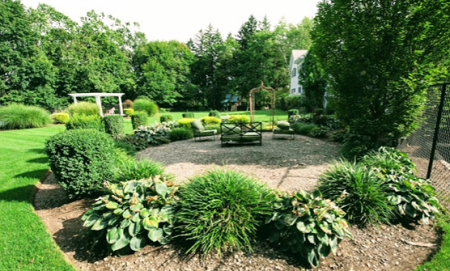If you’re looking to create a beautiful and functional outdoor space, then you need to start with a well-designed garden. Garden design is the art and science of arranging plants and other elements to create a visually appealing and functional outdoor space. In this article, we’ll cover the basics of garden design and provide you with tips and tricks for creating your perfect outdoor space.
Gardening is a rewarding and enjoyable hobby, and designing a beautiful outdoor space can greatly enhance your quality of life. Whether you’re an experienced gardener or just starting out, the key to a successful garden design is planning. In this article, we’ll provide you with tips and tricks to help you design a garden that is both visually stunning and functional.
Assess Your Outdoor Space
Before you begin designing your garden, you need to assess your outdoor space. Consider the size, shape, and layout of your garden, as well as the surrounding environment. This will help you determine the best approach for your garden design.
Determine Your Garden’s Purpose
Next, you need to determine the purpose of your garden. Are you looking to create a peaceful retreat, a space for outdoor entertaining, or a functional vegetable garden? Your garden’s purpose will determine the layout, style, and plants you choose for your design.
Choose the Right Plants for Your Garden
Choosing the right plants for your garden is crucial to its success. Consider the climate, soil type, and sun exposure of your garden when selecting plants. Choose plants that are well-suited for your environment and that complement your garden’s purpose and style.
Create a Focal Point
A focal point is a design element that draws the eye and creates visual interest. A focal point can be a plant, a sculpture, or a water feature. Choose a focal point that complements your garden’s purpose and style, and place it in a prominent location in your garden.
Read more: 7 Essential Garden Design Principles for a Beautiful Outdoor Space
Incorporate Hardscaping Elements
Hardscaping elements, such as walkways, patios, and retaining walls, can greatly enhance the functionality and beauty of your garden. Choose hardscaping elements that complement your garden’s style and purpose, and that are well-suited for your environment.
Consider the Seasonal Changes
Your garden should look beautiful and be functional year-round. Consider the seasonal changes in your environment when designing your garden. Choose plants that bloom in different seasons and that provide visual interest year-round.
Ensure Proper Maintenance
Proper maintenance is crucial to the success of your garden. Plan for regular maintenance tasks, such as watering, pruning, and fertilizing, when designing your garden. Choose plants that are well-suited for your environment and that require minimal maintenance.
Keep Your Garden Design Sustainable
Sustainability is an important consideration in garden design. Choose plants that are native to your environment and that require minimal water and maintenance. Use organic gardening practices and incorporate composting and rainwater harvesting into your garden design.
Use Lighting to Enhance Your Garden’s Beauty
Proper lighting can greatly enhance the beauty and functionality of your garden. Use lighting to highlight your garden’s focal points, and to create a warm and inviting atmosphere. Choose lighting fixtures that complement your garden’s style and purpose, and that are well-suited for your environment.
Incorporate Water Features
Water features, such as fountains and ponds, can add a calming and relaxing element to your garden design. Choose water features that complement your garden’s purpose and style, and that are well-suited for your environment.
Consider the Surrounding Environment
Consider the surrounding environment when designing your garden. Choose plants and design elements that complement the natural surroundings and that are well-suited for your environment. This will help create a cohesive and harmonious outdoor space.
Get Creative with Garden Art and Accessories
Garden art and accessories can add a unique and personal touch to your garden design. Choose art and accessories that complement your garden’s purpose and style, and that add visual interest and texture to your outdoor space.
Conclusion
Designing a beautiful and functional garden is a rewarding and enjoyable process. By assessing your outdoor space, determining your garden’s purpose, choosing the right plants and design elements, and ensuring proper maintenance, you can create a garden that is both visually stunning and functional. Incorporate your personal style and creativity into your garden design, and enjoy your outdoor space year-round.
